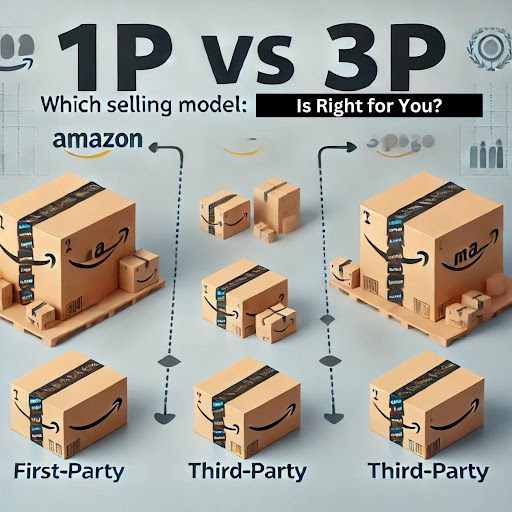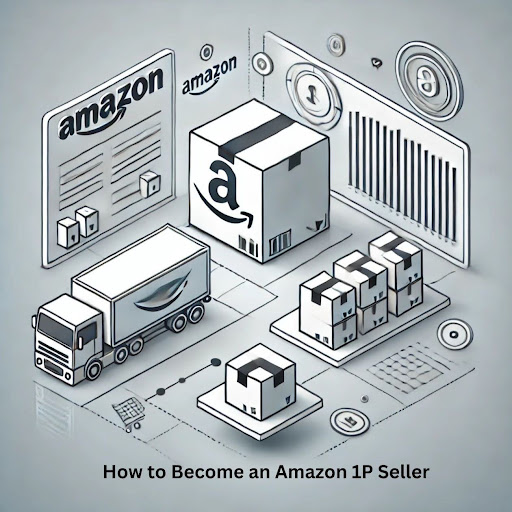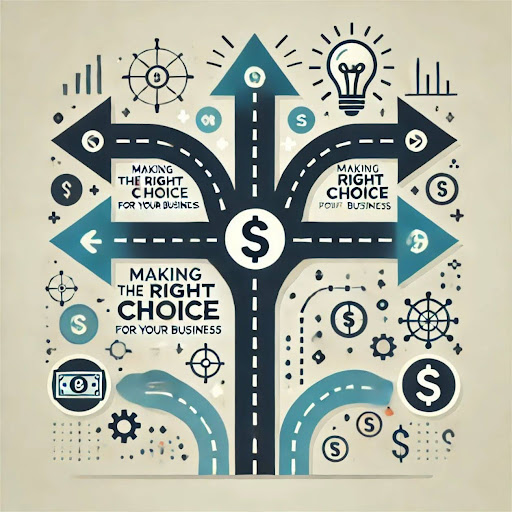Amazon 1P vs 3P: Which Selling Model Is Right for You?

As an Amazon seller, deciding between the Amazon 1P (first-party) and Amazon 3P (third-party) selling models can be challenging. Each model offers unique advantages and drawbacks, impacting your control over pricing, inventory, and customer interactions.
In this guide, we'll delve into the differences between Amazon 1P and 3P, explore their pros and cons, and help you determine which model aligns best with your business goals.
Understanding Amazon's Selling Models
What Is Amazon 3P?
Amazon 3P allows businesses to sell their products directly to customers on Amazon's marketplace through Seller Central. As a third-party seller, you manage your listings, set prices, and handle inventory. You have the option to fulfill orders using Fulfillment by Amazon (FBA) or Fulfillment by Merchant (FBM).
When you see “Sold by Anker,” it's an example of a third-party seller on Amazon.
What Is Amazon 1P?
Amazon 1P, or Amazon First-Party, involves selling your products directly to Amazon through Vendor Central. Amazon purchases your products at wholesale prices and takes responsibility for pricing, inventory management, fulfillment, and customer service.
When you see “Ships from Amazon.com” and “Sold by Amazon.com,” it's an example of Amazon 1P.
Pros and Cons of Amazon 1P and 3P
Understanding the advantages and disadvantages of each model can help you make an informed decision.

Amazon 1P Pros and Cons
Pros
-
“Sold by Amazon.com” Label
- Enhances customer trust and may boost sales.
-
Direct Relationship with Amazon
- Potential for better product placement and marketing opportunities.
-
Increased Visibility
- Priority in search results and marketing initiatives.
-
Hands-Off Approach
- Amazon handles listing optimization, customer service, and sales tax.
-
Access to Advanced Tools
- Utilize features like A+ Content and exclusive advertising solutions.
Cons
-
Limited Control
- Amazon sets pricing and controls inventory, affecting brand autonomy.
-
Lower Profit Margins
- Wholesale pricing reduces your earnings per unit.
-
Slow Payment Terms
- Payment cycles can extend to 30, 60, or 90 days.
-
Additional Fees
- Co-op fees, marketing fees, and chargebacks can total up to 25%.
-
No Guaranteed Revenue
- Sales are not assured despite Amazon's involvement.
-
Risk of Being Dropped
- Amazon can discontinue purchasing your products at any time.
How to Become an Amazon 1P Seller

Note: Amazon Vendor Central is invite-only. Here's how you might get noticed:
-
Perform Well on Amazon
- Maintain high sales volumes and positive customer reviews.
-
Participate in Trade Shows
- Increase visibility to Amazon brand managers seeking new products.
However, consider whether becoming an Amazon vendor aligns with your goals. As a 3P seller with Brand Registry, you already have access to:
-
A+ Content
-
Amazon Live
-
Brand Analytics
-
Amazon Storefronts
-
Amazon Vine
-
Advanced Advertising Products
Making the Right Choice for Your Business

Deciding between Amazon 1P and 3P depends on your business needs and goals.
-
Choose Amazon 1P if:
-
You prefer a hands-off approach.
-
You're willing to trade control for potential increased visibility.
-
-
Choose Amazon 3P if:
-
You want full control over your brand.
-
You're prepared to manage all aspects of selling.
-
If you need personalized guidance or help fine-tuning your strategies, Superfuel AI can assist. Our AI-powered assistant analyzes 36+ key Amazon metrics to identify and address the root causes of sales fluctuations, helping you optimize your storefront and boost sales. Reach out to us at [email protected].
--
Ben Mathew, Amazon Expert
Ben Mathew is a co-founder at Superfuel, a sales assistant for Amazon sellers. In the past, Ben and his team of e-commerce specialists and software engineers have launched 40+ new brands on Amazon, taking them from zero to bestsellers. In his free time, he is either learning from other top sellers or encouraging his 3 daughters in their love for reading. He is reachable at ben [at] superfuel.io.
FAQs
What is the main difference between Amazon 1P and 3P?
The primary difference is who sells the product. In 1P, you sell your products wholesale to Amazon, and Amazon sells them to customers. In 3P, you sell directly to customers on Amazon's platform.
How do I become an Amazon 1P seller?
Amazon 1P is an invite-only program. Focus on building a strong brand and sales performance to increase your chances of being noticed by Amazon.
Is selling as a 3P seller more profitable?
Often, yes. As a 3P seller, you have control over pricing and can optimize your listings to maximize profits.
Do 3P sellers have access to advanced selling tools?
Yes, especially if you're enrolled in Amazon Brand Registry. You'll gain access to tools like A+ Content and Amazon Advertising.
Can I switch from being a 3P seller to a 1P seller?
If invited by Amazon, you can become a 1P seller. Some businesses operate using both models for different products.